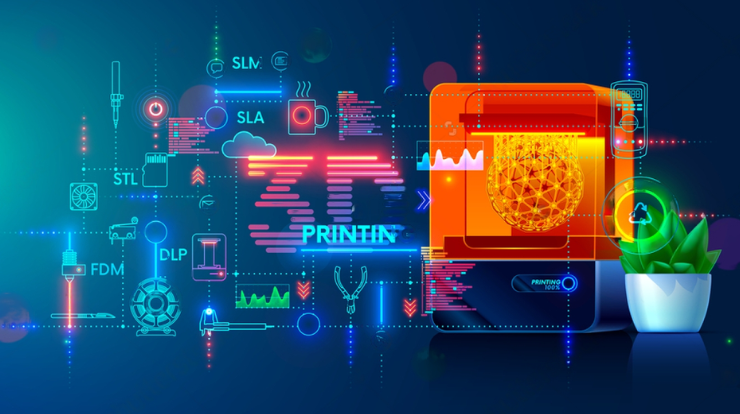How can 3D printing technology enhance the aesthetics of customized automotive parts in Dubai?
3D printing technology has revolutionized the automotive industry, offering new possibilities for the customization of automotive parts in Dubai.

One of the key aspects where 3D printing excels is in enhancing the aesthetics of customized automotive components. This article explores the ways in which 3D printing technology contributes to the visual appeal of customized automotive parts in the dynamic landscape of Dubai.
Precision and Complex Geometries:
One of the primary ways 3D printing Dubai enhances the aesthetics of customized automotive parts is through the precision it offers in creating complex geometries. Traditional manufacturing methods often face limitations when it comes to intricate designs and detailed features.
3D printing, however, allows for the layer-by-layer construction of parts, enabling the creation of intricate and complex shapes that would be challenging or impossible to achieve through traditional means. This precision ensures that customized automotive parts not only meet functional requirements but also exhibit a level of detail that can significantly enhance their aesthetic appeal.
Customized Design Freedom:
3D printing provides designers and automotive enthusiasts in Dubai with unparalleled design freedom. Unlike conventional manufacturing methods that involve molds and tooling, 3D printing allows for the direct translation of digital designs into physical objects.
This freedom enables the creation of highly personalized and unique automotive parts, tailored to individual preferences and styles. Automotive customization in Dubai, known for its luxury and innovation, benefits from the ability to bring intricate, bespoke designs to life, elevating the overall aesthetics of the customized parts.
Material Variety for Aesthetic Diversity:
The availability of a wide range of 3D printing materials further contributes to the enhancement of aesthetics in customized automotive parts. From plastics to metals, and even composite materials, 3D printing allows for the selection of materials based on their visual and functional characteristics.
For example, transparent or translucent materials can be utilized for creating visually striking lighting elements or clear casings, contributing to a modern and sophisticated aesthetic. The diversity in material options empowers designers and automotive enthusiasts in Dubai to choose materials that align with the desired visual impact of the customized parts.
Surface Finishing Techniques:
While 3D printing layers may initially exhibit a characteristic texture, advancements in surface finishing techniques play a crucial role in refining the aesthetics of 3D-printed automotive components. Post-processing methods such as sanding, polishing, or applying coatings can be employed to achieve smooth and visually appealing surfaces.
Additionally, specialized finishing techniques, including painting and texture application, further enhance the final aesthetics of the customized automotive parts. This flexibility in surface finishing allows for the creation of parts that not only meet functional requirements but also boast a refined and polished appearance.
Lightweight Designs for Efficiency and Style:
Dubai’s automotive culture appreciates both performance and style. 3D printing facilitates the creation of lightweight yet structurally sound components, providing a dual benefit of improved efficiency and enhanced aesthetics.
Lightweight designs contribute to overall vehicle performance, and the reduced mass of 3D-printed components can be strategically utilized to achieve sleeker and more stylish automotive aesthetics. The ability to optimize designs for both form and function positions 3D printing as a valuable tool in elevating the visual appeal of customized automotive parts in Dubai.
Iterative Prototyping and Design Refinement:
Another aspect where 3D printing positively influences the aesthetics of customized automotive parts is in the iterative prototyping process. Traditional manufacturing methods often involve significant lead times for tooling and prototyping, making design changes a time-consuming and costly endeavor.
With 3D printing, designers in Dubai can rapidly prototype and iterate on designs, allowing for real-time adjustments to enhance the aesthetics based on feedback and preferences. This iterative approach ensures that the final customized automotive parts meet or exceed the desired aesthetic standards.
Integration of Functional and Aesthetic Features:
3D printing allows for the seamless integration of functional and aesthetic features in customized automotive parts. Traditional manufacturing methods may require separate processes for incorporating intricate details or functional elements, leading to compromises in design.
However, 3D printing enables the simultaneous creation of complex geometries, internal structures, and aesthetic features. This integration results in customized automotive parts that not only look visually appealing but also perform optimally, aligning with the high standards of the automotive culture in Dubai.
Conclusion:
In conclusion, 3D printing technology significantly enhances the aesthetics of customized automotive parts in Dubai through precision, design freedom, material variety, surface finishing techniques, lightweight designs, iterative prototyping, and the seamless integration of functional and aesthetic features.
As the automotive customization landscape in Dubai continues to evolve, 3D printing stands as a transformative force, providing new opportunities for designers and enthusiasts to create visually stunning, personalized automotive components that reflect the luxury, innovation, and unique style of the region. The combination of technological advancements and creative design possibilities positions 3D printing as a driving force in the pursuit of automotive aesthetics excellence in Dubai and beyond.